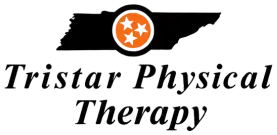Unveiling the Mystery of Outpatient Occupational Therapy
Outpatient occupational therapy is a type of therapy that focuses on helping patients with daily living activities, work-related tasks, and leisure activities. It is often used for individuals who have lost some of their physical or cognitive abilities due to illness, injury, or aging. Outpatient occupational therapy aims to help patients perform activities of daily living (ADLs) such as dressing, grooming, eating, and bathing, as well as instrumental activities of daily living (IADLs) such as cooking, driving, and managing finances.
The goal of outpatient occupational therapy is to help patients regain independence and improve their quality of life. This is achieved through a variety of interventions including exercise, manual therapy, adaptive equipment, and assistive technology. Outpatient occupational therapists work closely with patients to assess their needs, develop a personalized treatment plan, and provide ongoing support to help them reach their goals.
Unlocking the Power of ADL Training in Rehabilitation
One of the most important components of outpatient occupational therapy is ADL training. This involves teaching patients how to perform basic daily living activities, such as grooming, dressing, and eating. ADL training is an essential part of rehabilitation because it helps patients regain independence and self-confidence.
ADL training can be done in a variety of settings, including the therapist’s office, the patient’s home, or a simulated environment. The therapist may use adaptive equipment or assistive technology to help the patient perform ADLs more easily. The therapist may also teach the patient strategies to conserve energy and prevent injury while performing ADLs.
Overall, ADL training is a crucial component of outpatient occupational therapy. It helps patients regain independence and improve their quality of life. By working closely with a therapist, patients can learn skills to perform ADLs more easily and safely, and achieve their rehabilitation goals.
Outpatient occupational therapy is a powerful tool for individuals with disabilities, injuries, or illnesses. It offers a range of interventions and strategies to help patients regain independence and improve their daily lives. ADL training is a key component of outpatient occupational therapy, providing patients with the skills and support they need to perform basic daily living activities. By working with a therapist and engaging in ADL training, patients can unlock their full potential and achieve their rehabilitation goals.

